#pictorialist portrait
Text
back from our Sunday stroll

Adriaan Boer (1875–1940) ~ Portrait of a little boy with a goat on a sawn-off tree trunk, Netherlands, 1912-1922 | src Spaarnestad
view on wordPress
#1910s#1920s#childhood#children#Dutch photographer#goat#Netherlands#pictorialism#pictorialisme#pictorialismo#Piktorialismus#Piktorialismi#pictorialist portrait#pictorial portrait#portrait#Porträt#retrato#ritratto#portret#retrat#Bildnis#the netherlands#tree trunk
23 notes
·
View notes
Text
Monday's Photography Inspiration - Robert Demachy
Robert Demachy was a French Pictorial photographer of the late 19th and early 20th century. He is best known for his intensely manipulated prints that display a distinct painterly quality. He was influenced by the Impressionist painters and spent most of his time making photographs and developing his theories on photography, both technical and aesthetic.
Léon-Robert Demachy was born…

View On WordPress
#architectural photography#Black & White#black and white photography#inspiration#inspiration of the week#inspirational photographers#inspirations#Monday&039;s photography inspiration#pictorialism#pictorialist#portrait masters#Robert Demachy#Robert Demachy photography
6 notes
·
View notes
Photo

🔸 Arthur F. Kales - “The Call of the Sea” circa 1916. San Francisco Bay. Born in the Arizona territory, Arthur Kales received a law degree from the University of California at Berkeley in 1903. While living in the Bay Area, he became interested in the burgeoning Pictorialist movement in photography that flourished there, and his images met with immediate success. Kales moved to Los Angeles to work in advertising but returned to San Francisco in 1917. In the following year, he nevertheless joined the Camera Pictorialists of Los Angeles. For fourteen years beginning in 1922, Kales wrote about Pictorialist photography in western America for the journal Photograms of the Year. #victorianchaps #portrait #1910s #goodolddays #vintage #history #edwardian #beauty #nostalgia #oldphoto #sea #retro #pastlives (at San Francisco, California) https://www.instagram.com/p/Ch4VmOagfO1/?igshid=NGJjMDIxMWI=
#victorianchaps#portrait#1910s#goodolddays#vintage#history#edwardian#beauty#nostalgia#oldphoto#sea#retro#pastlives
67 notes
·
View notes
Photo

Pierre Troubetzkoy, Amelie Rives, Princess Troubetzkoy, 1904, gum bichromate over platinum print, 18.7 x 23.2 cm, The Metropolitan Museum of Art.
“This photograph should be seen as a collaboration: Troubetzkoy, a Russian portrait painter, took the picture; his wife, Amélie, a novelist and playwright from a prominent Virginia family, posed for it; and Alvin Langdon Coburn (1882-1966) printed it.
Coburn, who had accompanied Amélie's sister, the amateur photographer Landon Rives, to the Rives family estate at Castle Hill, where he met Troubetzkoy, transformed the straightforward image into a Pictorialist composition in the darkroom, deliberately increasing the foreground shadow and allowing the soft focus to create a palpable sense of atmosphere. Such techniques proclaim Coburn's membership in the Photo-Secession, a turn-of-the-century association of avant-garde photographers founded by Alfred Stieglitz. The group was devoted to establishing its medium's place among the fine arts by creating exquisitely crafted, painterly, singular prints—a goal Coburn achieved here using the graphic strength of Troubetzkoy's portrait as a starting point.”
2 notes
·
View notes
Text
Week Three - Zula Rabikowska

Untitled, 2021
The shot was taken with a small aperture and a narrow depth of field, possibly ranging from f/1.4 to f/2.8, resulting in an obvious "bokeh effect" in the background and a lack of finer details except for the subject. The lack of distortion indicates that this shot was taken with a standard lens. It's also photographed at eye level, emphasizing familiarity and connection. The subject is almost in the center of the frame, with a slight lean to the right, adding a dynamic aspect to the composition. Curves dominate this photograph, as seen by the subject's sweatshirt, hair, eyeliner, smoke, and even the lip expression. These curves provide the image flow and organic movement. Zula additionally used warm, natural light from the subject's right and front. This lighting arrangement contrasts the well-lit subject with the very dark background, drawing attention to the subject and creating a visually pleasing focus point. The standard lens and eye-level perspective provide the impression that the viewers is engaged with the subject on an intimate and relatable level. The subject's central-right placement provide a feeling of balance and a subtle sense of movement, offering some interest to the overall arrangement. The use of light on the subject against a dark background draws attention to the girl's features and expression, generating a strong visual contrast that represents a sense of individuality or uniqueness. It also gives the image depth and dimension, highlighting the subject's appearance.
The series "Nothing But a Curtain"
The portraits in the series are mostly of people from the "Eastern Bloc." These portraits depict the people in a variety of events and perspectives and are usually accompanied by private possessions or symbolic artifacts. The aim of the series is to shed light on the impact of cultural and gender stereotypes on their lives and explore the long-term effects of the Iron Curtain and the downfall of communism. Furthermore, the series investigates how these individuals navigate and express their gender identities in a constantly evolving sociopolitical setting. Zula expertly uses a Kiev 80 camera, which was made in the Soviet Union, to create a distinct and classic appearance in her photos. According to her, the camera's metal shutter produces a "curtain" of light in the photographs, adding a symbolic element to the subjects and making the images more iconic. This approach is similar to the Pictorialist movement of the late nineteenth and early twentieth century. Pictorialism, like Zula's images, prefers the subject to be in focus with everything else in the image blurred. Each portrait is framed and composed in a unique way, with some subjects shown in close-up and others in environmental contexts, yet the subject is always the center of attention in all the photos. These decisions contribute to the subject's uniqueness and diversity, showcasing her skillful eye for photography. Zula's use of warm and dreamy light effects unites the portraits as one story, creating an inviting atmosphere that draws viewers in. The accompanying written material serves to provide a meaningful context and greater depth to the images. It effectively sheds light on the series' objective, the artist's journey, and the larger social and historical backdrop. It is especially significant in a topic where many people may not have the background information to understand the work's meaning. By doing so, it elevates the photographs from mere portraits to a reflection of the diverse realities of people in the region. This expanded perspective helps to enhance the viewer's understanding and appreciation of the images.
My Photographs






Side Harsh Lighting: This casts an intense shadow, highlighting texture on one side while concealing all features on the other. This heightens the image's drama and intensity. The image has a dark and gloomy vibe, and the shadows and hidden elements provide a feeling of mystery and suspense. This type of lighting is often seen in mystery, thriller, and noir films such as Se7en.
Direct Harsh Lighting: This produces a strong shadow as well as very bright highlights. It produces a stronger contrast and can make the apple look more intense and vibrant, accentuating its texture and features. This draws attention to the subject at hand and gives them the appearance of being in the spotlight.
Soft Diffused Lighting: Diffused lighting, created by a softbox or natural light, provides soothing, and even radiance. This smoothness and consistency gives the fruit a sense of calmness, making it appear inviting and delicious.
Warm vs. Cool Lighting: Warm lighting produces a cozy and nostalgic environment that is great for making fruit feel inviting or romantic. Cool lighting creates a sense of quiet and detachment, making the fruit look fresh or cold like it is in a fridge.
1 note
·
View note
Text
Looked through my old photos and found this great snapshot of my sister I took a few years back. My aesthetic sensibilities were different back then and I didn't really appreciate the pictorialist soft focus portrait style (the lens had mold in it). I mean I still prefer straight photography but not to the complete exclusion of earlier, pre-modernist styles.
0 notes
Text
Inspiration From Other Photographers
I began reading through a book called Photography by David Bate, and three photographers in the book stood out to me as being influential for what I am trying to achieve in my project.
First is Julia Margaret Cameron. I knew about Cameron before reading this book because I did a presentation on her for one of my art history classes. I always loved the dreamy quality of her work, and I feel as though I have always aspired for that in my photos. She took a lot of portraits, but I feel as though that dreamy and shallow depth of field can be used in more than just portraiture as well. I also find it inspiring that she was one of the first-ever female photographers (Bate, 2021, p. 30). However, what I find most inspirational is how she embraced technical flaws within her photos, and how she "saw [photography] as a way of creating a subjective and emotional interpretation of the subject" (Bate, 2021, p. 30). I feel as though that is exactly what I am going for in my work.
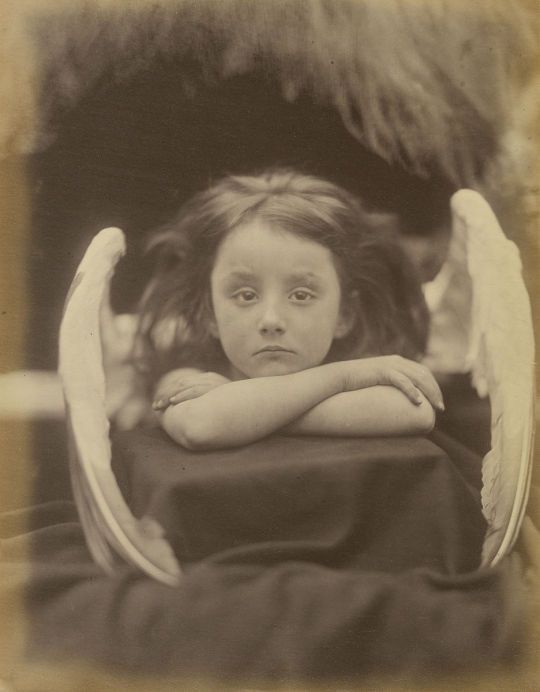
I Wait by Julia Margaret Cameron, 1872
The next photographer whose work I find to be influential is Harold Cazneaux. He was a Pictorialist, someone who "sought to make individually crafted photographic prints that would be seen as graphic art objects" (Bates, 2021, p. 35). I find this idea super interesting, however, I mostly am intrigued by his subject matter. He has many images that appear to be quiet, but most also look more like a drawing or painting than an actual picture. That is sort of the effect I am going for in my work, I have been trying to achieve an effect that makes my images more than just photographs. For that reason, I find Cazneaux's work intriguing.
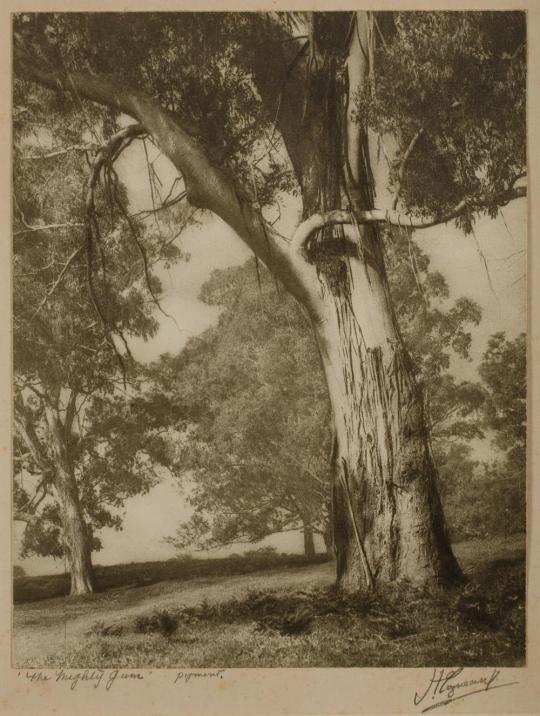
The Mighty Gum by Harold Cazneaux, c.1930s
Finally, the last artist I discovered in the book is Luigi Ghirri. Ghirri's photos appear to be quiet in nature to me, but he also experiments with "the flatness of photography" (Bates, 2021, p. 102). I really love the way he composes his photos; they are all very neat, clean, and well thought out. The image below in particular stood out to me as being similar to what I am trying to achieve in my work. I feel as though there is a sense of quiet and serenity within the photo, and I find it to be beautiful.

da "PAESAGGIO ITALIANO" by Luigi Ghirri, 1985
References:
Bate, D. (2021). Photography. S.L.: Thames & Hudson.
0 notes
Photo
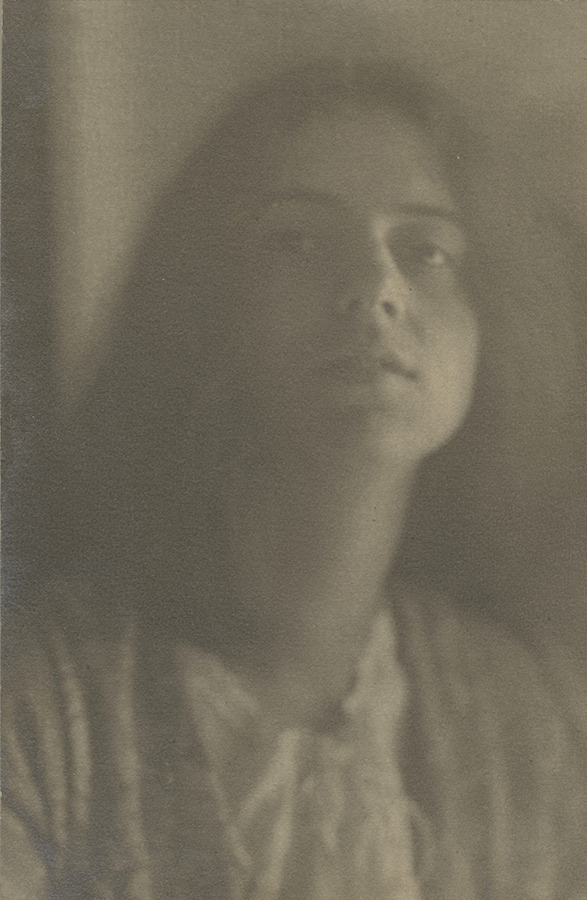
Photographe anonyme. Portrait pictorialiste. France, vers 1910. Tirage argentique d’époque. 26.5 x 17.3 c via Galerie Lumière des roses
#Photographe anonyme#Anonymous photograph#Portrait pictorialiste#France#1910#Galerie Lumière des roses#Other Pictures
82 notes
·
View notes
Text

Gertrude Käsebier :: Zitkala Sa, Sioux Indian and activist, ca. 1898 | src NMAH
view more Zitkala-sa by Käsebier on wordPress
#gertrude kasebier#zitkala sa#sioux#native american#pictorial portrait#pictorialist portrait#pictorialism#photosecession#gertrude käsebier#portrait#women artists#women photographers#beauty#gertrude simmons#red bird
1K notes
·
View notes
Text
Monday's Photography Inspiration - C.M. Battey
Monday’s Photography Inspiration – C.M. Battey
Cornelius Marion Battey was an American photographer who captured portraits of black Americans in a pictorialist style. His photograph of black leaders appeared on the cover of the NAACP’s magazine The Crisis beginning in the 1910s. He later founded and headed up the photography department at the Tuskegee Institute.
He was born on August 26, 1873 in Augusta, Georgia, but was raised in the North.…

View On WordPress
#Black & White#C.M.Battey#Cornelius Marion Battey#inspiration#inspiration of the week#inspirational photographers#inspiring photographers#Monday inspirations#Monday Photography inspiration#monday&039;s inspiration#Monday&039;s photography inspiration#Photography
2 notes
·
View notes
Text
Imogen Cunningham

Imogen Cunningham was born in 1883 in Portland, Oregon. Cunningham was a photographer known for both her botanical photographs, as well as her portraits of important people such as Freida Kahlo, Herbert Hoover, Man Ray, and Martha Graham. Though her early work was influenced by Pictorialism, she later rejected Pictorialist sentimentality in favor of modernist approaches such as New Objectivity. Like many Western photographers, Cunningham embraced Straight Photography, which focused on capturing images in sharp detail and clarity, emphasizing the qualities that distinguish photography from other forms of visual art. Alfred Stieglitz believed Cunningham to be among the most important Western photographers. Cunningham became a Fellow of the American Academy of Arts and Sciences, and was inducted into the International Photography Hall of Fame.
Imogen Cunningham died in 1976 at the age of 93.
26 notes
·
View notes
Photo
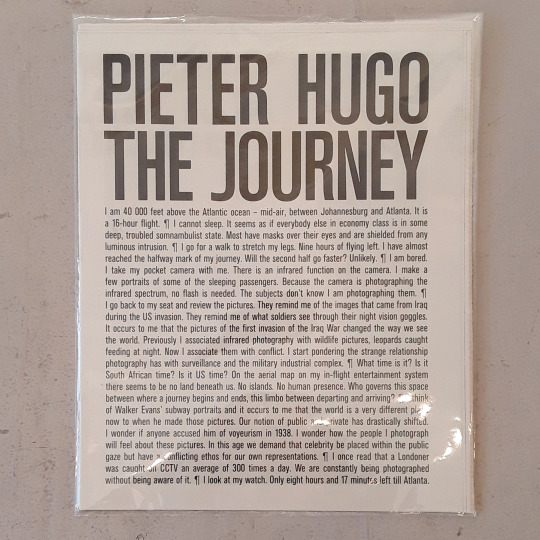
Picked up a signed copy of this at Dashwood - A simple and brilliant piece of work by Pieter Hugo encapsulating themes of surveillance, voyeurism, war, time, space....somewhere on the borders of our Troposphere.
I guess when one has to shoot they have to shoot. No matter when, where or how.
There has been plenty written about images of death and sleep - If read out of context, some of the portraits, (if we can call them that) mouth agape, rendered in uncanny low contrast infrared light, (almost pictorialist in its tones) could be mistaken for post mortem photographs. The others, with their neck braces, eyes covered with sleeping masks, look as if they are frozen in a cryogenic sleep chamber. They are in a steel tube, 40,000 feet in the air after all.
I have been binging on the original Twilight Zone series in the last month or so. Here, as Serling would pronounce from his corner, we have definitely crossed into that “middle ground between light and shadow”.
5 notes
·
View notes
Photo


These two photos both use colour but in very different ways. The photo of me was taken in a pictorialist style which tries to create photographs that look like paintings. It is blurred and uses a small range of soft colours.
While the photo of me is preoccupied more with capturing an image that looks like an oil painting the portrait of the young punks appears to be attempting to capture their likeness and thus uses brighter lighting and creates a clearer photo.
1 note
·
View note
Text
PHOTOGRAPHY CRITICISM
Qualities of a photograph that are the most important or useful for making an insightful critique of the image.
Framing
Lighting
Composition
Narrative
Color - black and white or color
Focus - details included and not
perspective/angel
Unique moments
What is in the frame
Creativity
Which genres of photography emphasize certain qualities over others.
Photojournalism: is one of the genres of photography that comes to mind because their are so many rules that goes with gener. I believe since photojournalism is close to documentary photography it has to also have similar rules. “Photojournalism is not about shooting unexpected events, but about capturing unexpected moments at events that are planned. It is serious journalism and a person needs to plan it right to be at the right place and at the right time.” With this said, one is not allowed to manipulate an image shot for their benefit or in a way of trying to make the public see.
Analyze two photographs according to your own criteria: one of yours, one of a classmate’s. “Maddie Smith”
Caricature is what comes to mind when i first saw this project. It was focused on enlarging different parts of the face through using cutouts from another set of face and also with a magnifier. I like the concept of the magnifying glass to enlarge the lips. however, the strong grip of the hand that is holding the magnifying glass which is held onto the lips draws my attention it's not the hand but what the hand is doing. I feel a lot of tension and almost as if their had been an argument before that hand held the magnifier. I find the eyes to be rather piercing, a littel bit scary. They're two different sizes and colors and for some reasons i feel they are both pleading but in different ways. With the way the various parts has been cut out and placed I feel the was making an even obvious emphasis on these parts. The wig is also an interesting i almost overlooked but the wig is like a form of disguise of not wanting to be seen as their true self.
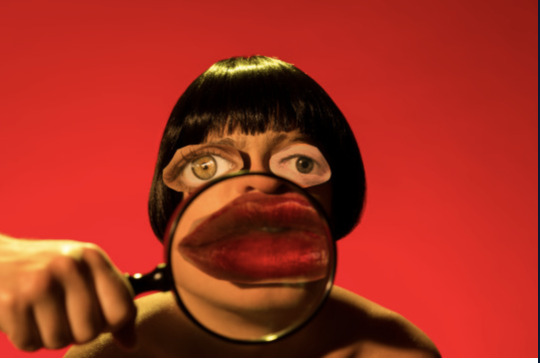
Ansel Adams
He is known to be among the best photographers in the world. He was among a group called the f/64 the aperture which all the members shot at. He was a purist, In references to Ansel Adams works, He was a photographer who paid so much attention to light, tone, details and technical aspect of his work. He worked and experimented in order for his prints to be what he exactly wants them.

Ansel Adams (1902-1984) - 'Jeffrey Pine Sentinel Dome', Yosemite National Park, California, 1930's
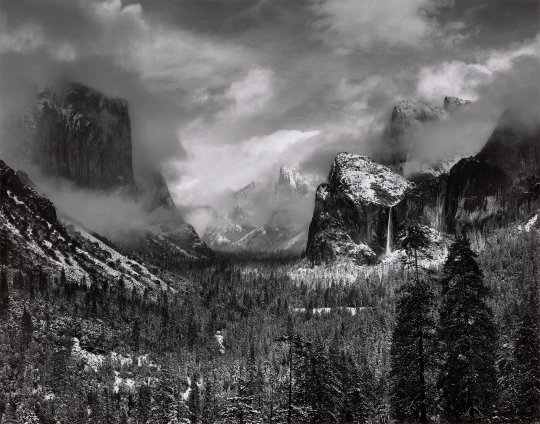
“Clearing Winter Storm, Yosemite National Park,” by Ansel Adams, about 1937.
Purism:
Purism in it's 'rawest form' is about using a manual camera with an optical viewfinder, a manual focus lens, a lens filter, a roll off film and a brain that can determine the exposure in relation to the light and the pressing of the shutter button to fire the shutter and capture the image.
Isuues raised concerning purism

Pictorialism:
Pictorialism was closely linked to prevailing artistic movements, as the photographers took inspiration from popular art, adopting its styles and ideas to demonstrate parity between it and photography. Pictorialist where the ones to start up the conversation a photography being art and doing so discussions such as photographic manipulation was brought up.
William Mortensen
Willianm Mortensen is a successful Hollywood portrait photographer and also a pictorialist. His style of photography relied on painterly soft-focus and darkroom techniques to produce lavishly toned prints he found himself at odds with the new "purist" movement in fine arts photography. His compositions and subject matter were steeped in Gothic traditions often theatrical, strange, grotesque and bizarre.
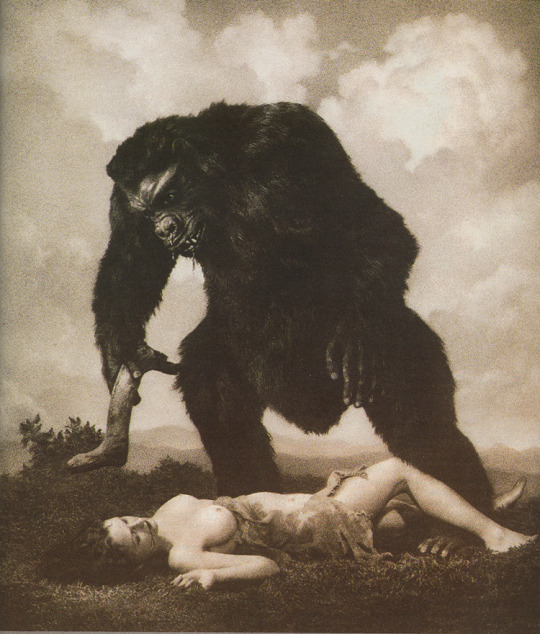
L’Amour (1935). Photograph: William Mortense
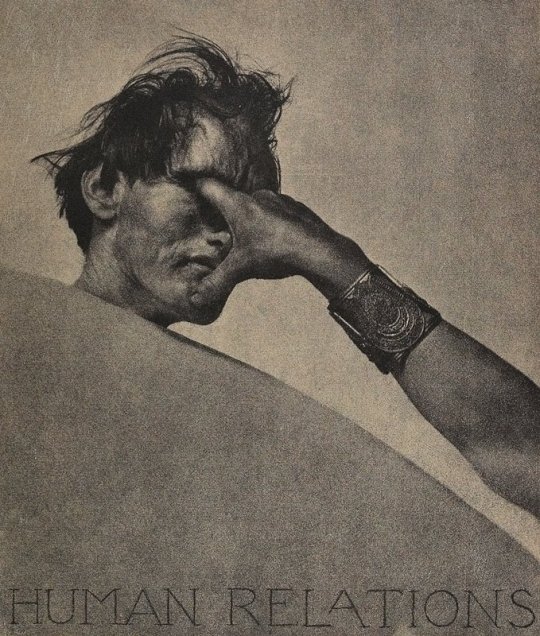
Human Relations 1932 William Mortensen
Debate between Pictorialism and Purism
The fight between purism and pictorialism is all about who is right in the content they produce. It all brings back the question of what is art and what is photography. Does anyone has the right to say a photographic content is wrong just because it does lot follow a certain procedure?
For me this was what was going on with Ansel Adams and William Mortensen. the Pictorialist believed that people believed more about the way purist went about their work because they where often recognized publicly. Then it was difficult to get people to be on the same boat as you with something that is new to them and also in terms of ideas and what one belived and so they was a long drag about photographers making fun of each other in reference to what they chose to photograph and how they chose to carry out a project. I do not think any of them were doing something wrong rather the purisit and and Pictorialist introduced possible different ways on can chose to experess themselves of show people what Is actually around them. Photography to me has always been a way to show people things that influnce me and a journey that takes time to unfold itself.
1 note
·
View note
Text

03 Works, RELIGIOUS ART - Contemporary 20th C. Interpretation of the Bible!, František Drtikol's Étude de la Crucifixion - #12
In 1910, Frantisek Drtikol opened his studio in Prague and rapidly developed a reputation as a portrait photographer. At first, his personal work - mostly landscapes - diffused a symbolist-like pictorialist aesthetic. In the 1920s, he created daring and inventive nude studies that mingled Cubism, Abstraction and Art Deco…
Please follow link for full post
Art,Paintings,Femme crucifiée,Helenic,biography,History,Religiont,mythology,Zaidan,František Drtikol,Contemporay RELIGIOUS ART,Crucifixion,footnotes,
Art #Bible #biography #History #Jesus #mythology #Paintings #religion #Saints #Zaidan #footnote #fineart #Calvary #Christ
#Art#Bible#biography#History#Jesus#mythology#Paintings#religion#Saints#Zaidan#footnote#fineart#Calvary#Christ
0 notes